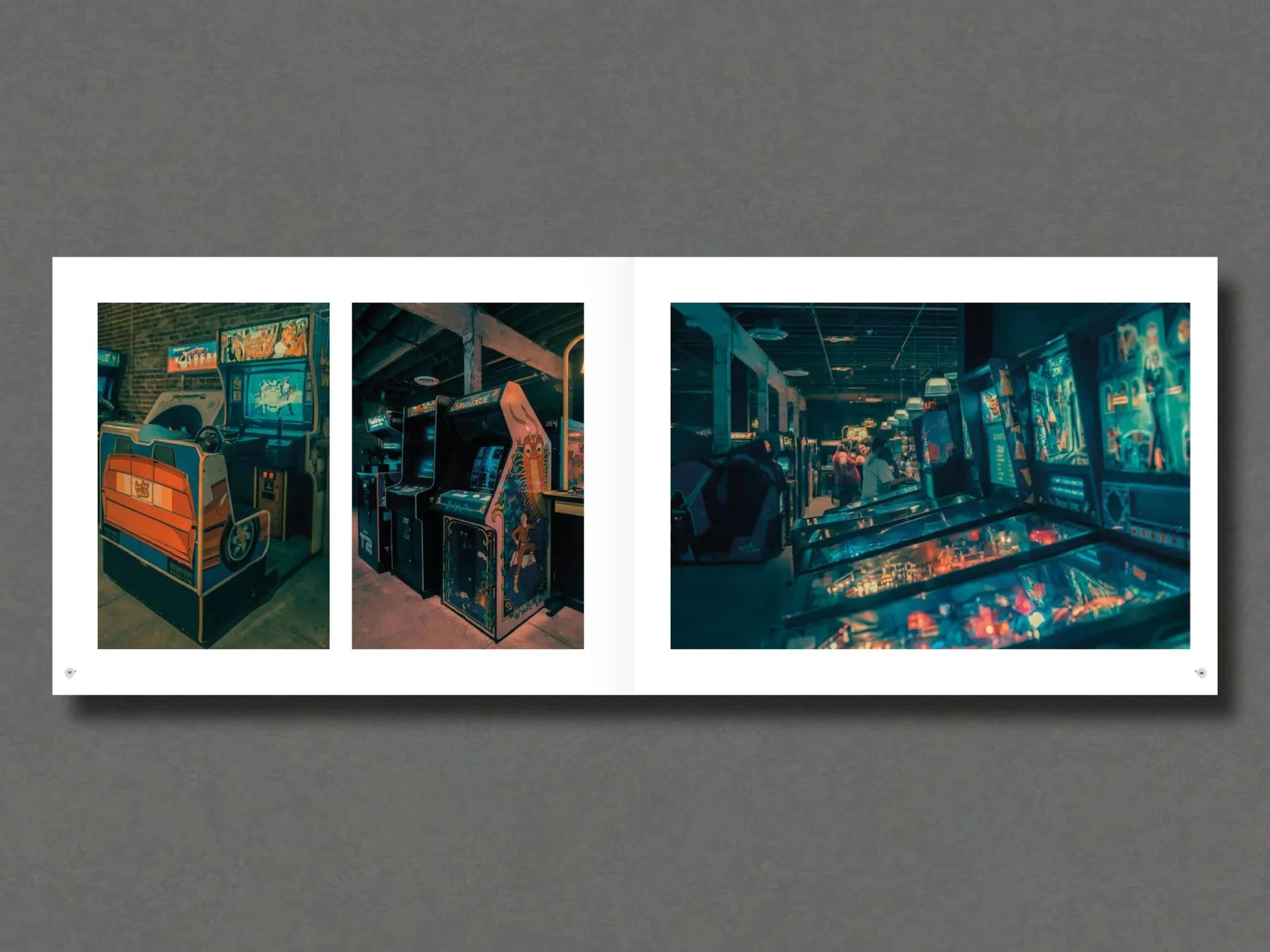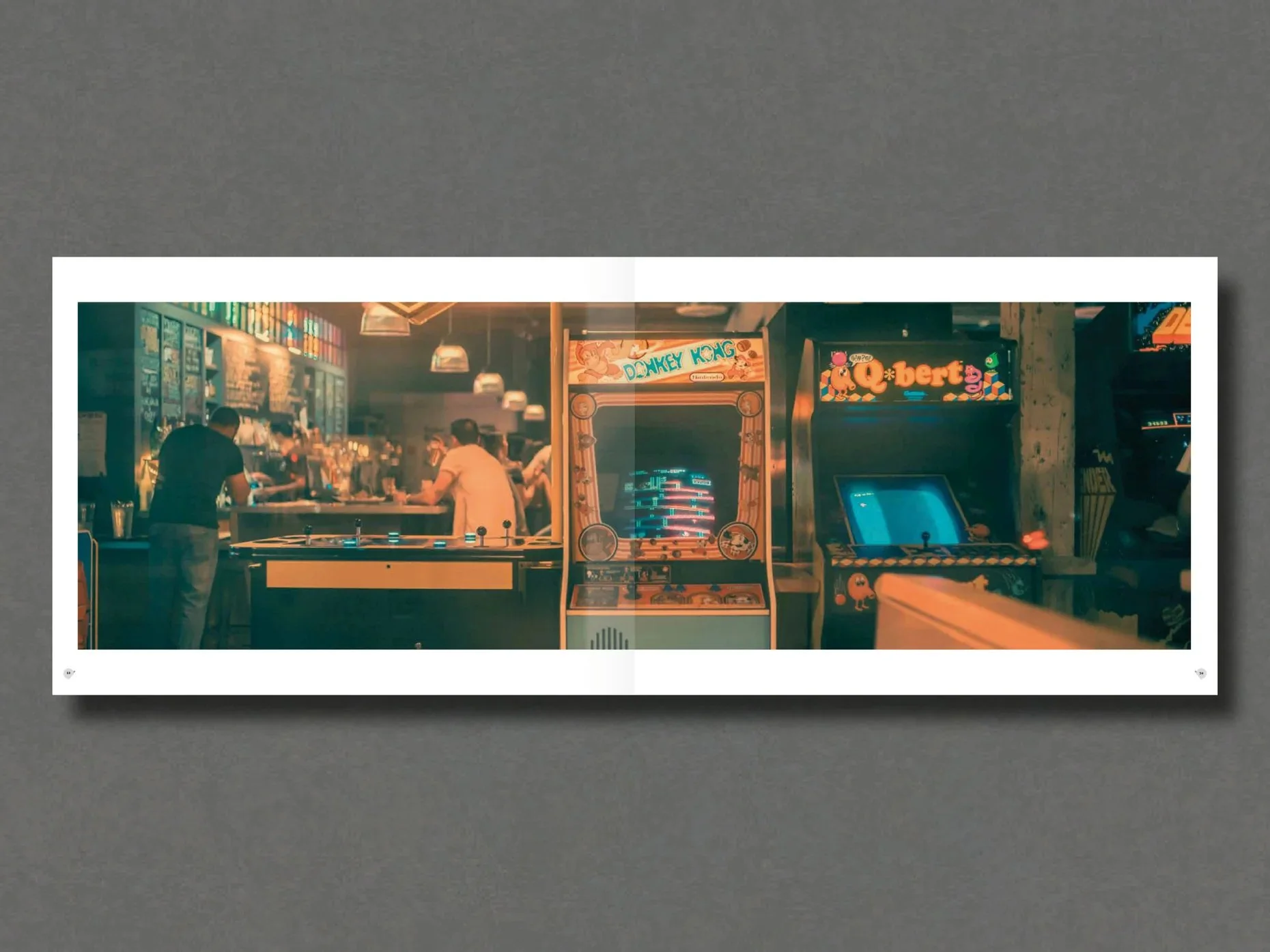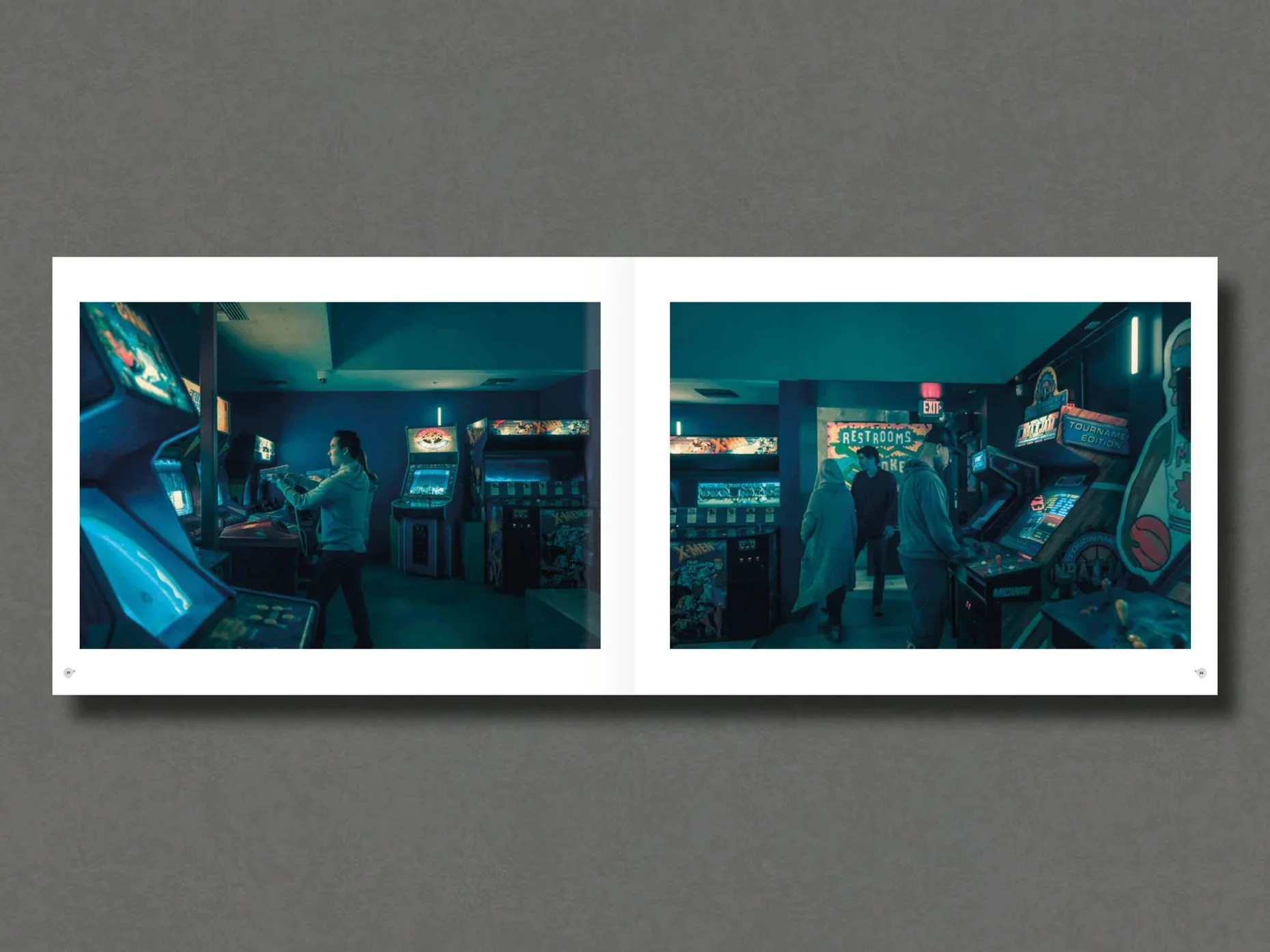Franck Bohbot
Franck Bohbot
Back to the Arcade
Hardcover
300 x 240 mm
164 pages
148 images
Setanta Books
About the Book:
In his series Back to the Arcade, Franck Bohbot’s mastery of color, and ability to frame a narrative is on full display. Through his lens, arcades open to the viewer like a tightly woven short film, noire-esque even. There is a feeling of criminality within the photos, as if you’ve found your way into a speakeasy, where acts are taking place — hidden, fringe, and celebrated by those lucky few able to produce the password for the doorman. And in the midst of this are the machines themselves: grouped together in collections by those obsessed with them, tantalizing to touch, to play. Bohbot’s eye shows us this side of Los Angeles, where current-day inhabitants have grouped together to experience the arcane, to be solitary yet in groups, to revel in the fantastical pursuit of dreams. All of this is bathed in Bohbot’s unique light, much like the city of Los Angeles itself, a place where joy chases the sun, and when it sets, the occupants of the city find the hidden places.
Back to the Arcade is a masterful series that captures time. The time it takes for Bohbot’s fully opened lens to record the scant light inside each arcade. The time
the subjects of the photos spend in front of each machine. And the idea of time itself, seemingly standing still inside these arcades.
Images Setanta Books / Franck Bohbot
Book review by Dana Stirling |
Lana Z Caplan’s Oceano (for seven generations) is a book that resists simplicity. In the shifting sands of California’s Oceano Dunes, Caplan unearths a layered history of occupation, industry, and ideology, revealing a landscape where past and present collide. With striking visual clarity, she embraces contradiction, offering a portrait of a place both fiercely contested and deeply loved.
The Oceano Dunes, located along California’s central coast near Pismo Beach, are a vast and dynamic coastal sand dune system, renowned for their dramatic landscapes and recreational draw. One of the few places in the state where off-highway vehicles (OHVs) are allowed on the sand, the dunes attract adventure seekers and nature lovers alike. Yet, beyond their thrill-seeking appeal, they serve as a fragile ecological habitat. The dunes have long been the subject of environmental debates, as conservationists and local residents push to protect the land from ongoing degradation.
Images Setanta Books / Franck Bohbot
These same dunes have inspired generations of artists, poets, and photographers—including Edward Weston—but they are, first and foremost, the unceded land of the yak titʸu titʸu yak tiłhini Northern Chumash. The yak titʸu titʸu yak tiłhini Northern Chumash are an Indigenous people of California’s Central Coast, whose ancestral lands stretch from Morro Bay to the Santa Maria River. Their name, meaning "the people of the village of the full moon" reflects their deep connection to the land and its natural rhythms. For thousands of years, they lived in balance with this environment, fishing, hunting, and gathering, developing a rich cultural and spiritual tradition tied to the coastal ecosystem. Today, they continue to advocate for the protection of their sacred lands, including the Oceano Dunes, while also fighting for federal recognition of their rights and heritage.
And yet, today, the dunes host a different kind of occupation—throngs of ATV riders carving across the sand, locked in an ongoing legal and cultural battle with environmentalists and local residents over the right to use and the right to preserve. Caplan does not take sides. Instead, she constructs a visual excavation, sifting through archival traces, historical remnants, and contemporary realities to reveal a site of layered and contested meanings. Oceano does not follow the familiar arc of environmental protest photography; there is no single villain, no clear moral imperative. Instead, the book captures the coexistence of vastly different relationships to the land—gleaming helmets of ATV riders, the fragile remains of old homesteads, the wreckage of abandoned vehicles, and the quiet persistence of the dunes themselves. The photographs reject sentimentality but demand engagement, placing the viewer in a space of tension where beauty and destruction, memory and erasure, stand side by side.
Images Setanta Books / Franck Bohbot
At its core, Oceano asks: How do we reckon with the weight of history in a living, changing landscape? The book does not offer an answer—it does something harder. It forces us to sit with the discomfort of the question, to see with clarity, and to recognize that the fight for land is never just about land. It is about identity, belonging, and the narratives we construct around both. The book’s subtitle, for seven generations, references a core Chumash principle—that decisions made today must consider the impact on those who will live seven generations into the future. This ethos runs through Caplan’s approach, not only in her subject matter but in the very structure of the book itself.
Through the interplay of black-and-white images—perhaps a nod to the work of Weston—and contemporary color landscapes, Caplan allows us to see the dunes in their primordial stillness and their present, human-marked state. The juxtaposition reveals a truth we cannot ignore: while the dunes may appear eternal, they are not untouched, nor are they immune to change. Oceano invites us to look more closely, to question more deeply, and perhaps, to consider our role in shaping what remains.
Images Setanta Books / Franck Bohbot








